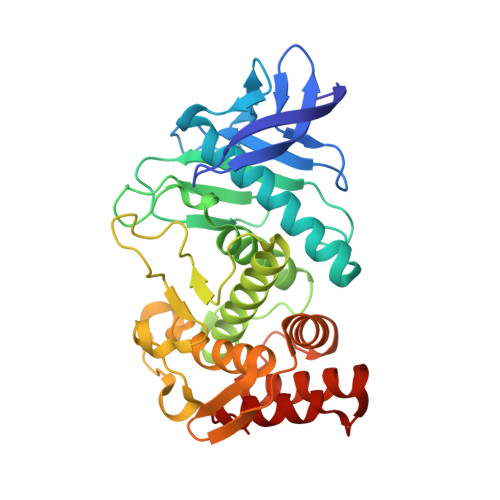The use of trimethylamine N-oxide as a primary precipitating agent and related methylamine osmolytes as cryoprotective agents for macromolecular crystallography.
Marshall, H., Venkat, M., Hti Lar Seng, N.S., Cahn, J., Juers, D.H.(2012) Acta Crystallogr D Biol Crystallogr 68: 69-81
- PubMed: 22194335
- DOI: https://doi.org/10.1107/S0907444911050360
- Primary Citation of Related Structures:
3T25, 3T26, 3T27, 3T28, 3T29, 3T2A, 3T2H, 3T2I, 3T2J - PubMed Abstract:
Both crystallization and cryoprotection are often bottlenecks for high-resolution X-ray structure determination of macromolecules. Methylamine osmolytes are known stabilizers of protein structure. One such osmolyte, trimethylamine N-oxide (TMAO), has seen occasional use as an additive to improve macromolecular crystal quality and has recently been shown to be an effective cryoprotective agent for low-temperature data collection. Here, TMAO and the related osmolytes sarcosine and betaine are investigated as primary precipitating agents for protein crystal growth. Crystallization experiments were undertaken with 14 proteins. Using TMAO, seven proteins crystallized in a total of 13 crystal forms, including a new tetragonal crystal form of trypsin. The crystals diffracted well, and eight of the 13 crystal forms could be effectively cryocooled as grown with TMAO as an in situ cryoprotective agent. Sarcosine and betaine produced crystals of four and two of the 14 proteins, respectively. In addition to TMAO, sarcosine and betaine were effective post-crystallization cryoprotective agents for two different crystal forms of thermolysin. Precipitation reactions of TMAO with several transition-metal ions (Fe(3+), Co(2+), Cu(2+) and Zn(2+)) did not occur with sarcosine or betaine and were inhibited for TMAO at lower pH. Structures of proteins from TMAO-grown crystals and from crystals soaked in TMAO, sarcosine or betaine were determined, showing osmolyte binding in five of the 12 crystals tested. When an osmolyte was shown to bind, it did so near the protein surface, interacting with water molecules, side chains and backbone atoms, often at crystal contacts.
Organizational Affiliation:
Program in Biochemistry, Biophysics and Molecular Biology, Whitman College, Walla Walla, Washington, USA.




















